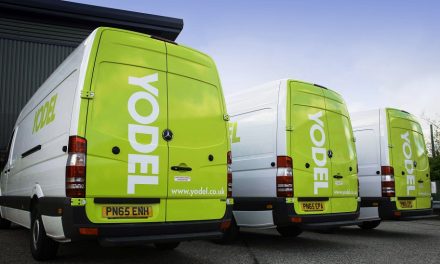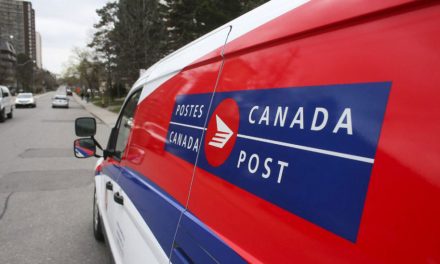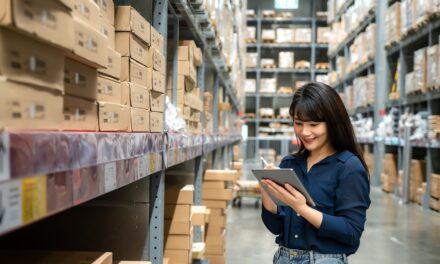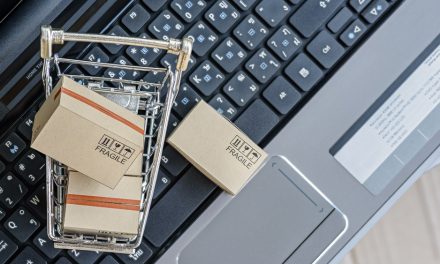
The need for green data

Tim Robinson, Chief Executive Officer & Founder of Doddle, explains why better data and green checkouts will drive last-mile sustainability.
“I was struck recently when I read Posten Norge’s annual report from 2020 – or to give it its full title, the Annual and Sustainability Report 2020. Right in the middle of it, after the need-to-know stuff and the board commentary and the strategy, but before the financials, sits 20 pages on sustainability. It’s not fluff – data is reported against targets, top line strategy is translated into specific initiatives.
Others aren’t far behind. The annual reports of most posts are loaded with references to sustainability. Few are structuring their reports quite like Posten Norge, but in a few years I suspect this will become the norm. The world is already feeling the effects of climate change, and as those effects become more tangible, businesses will feel their sustainability responsibilities ever more keenly. They, like Posten Norge, will need to put sustainability at the centre of the business, giving it real weight in strategy and allowing it to drive change right across their operations.
Sustainability means many things to many people. In the reports of businesses like Posten Norge and An Post, for example, sustainability is explicitly tied to the United Nation’s Sustainable Development Goals, and so there are objectives covering gender equality, community building, labour practices and biodiversity. All of those are laudable goals, but when consumers talk about sustainability, they are typically thinking about environmental impact – greenhouse emissions, waste, pollution, et cetera. When we talk about sustainability and e-commerce consumers, this is what we are talking about.
The Posten Norge report highlights that there are hundreds, if not thousands, of initiatives that could improve the ‘sustainability’ of a post or parcel carrier. Those initiatives cover everything from tyre retreading to moving trailers off the road and onto the railways, to packaging and the circular economy and waste reduction. At Doddle, we focus particularly on sustainability in the last mile. Firstly because, let’s be honest, it’s the part we know about. Importantly though, it’s also one of the key focal points for consumers when they come to think about the sustainability of e-commerce – they see and hear the delivery van on the roads, whereas they probably don’t think about the carbon impact of producing those low-cost jeans the van is bringing them.
There’s a real challenge for parcel carriers and posts, though, when it comes to understanding how impactful different “sustainable” solutions are. There are simply so many variables at play – the type of vehicle driven, vehicle fill rate, vehicle fuel source, delivery location (urban vs rural), delivery type (PUDO vs home), consumer transport mode to pick up items from PUDO, package size & weight, and more besides. This means that data on emissions or miles driven per delivery is surprisingly scarce. Recently, however, we have started to see some industry leaders stick their necks out. For example, DHL recently suggested that deliveries to their Packstations resulted in 30% less carbon emitted per parcel. And at a market-wide level, McKinsey reckoned in a 2020 report that locker deliveries could reduce emissions by 60%. But the sheer discrepancy between these two figures from two well-respected businesses highlights the problem: how should a parcel carrier evaluate the impact of different delivery options, when the number of variables to be examined can range so significantly?
This isn’t just an issue with parcel lockers – it’s true of basically every sustainability approach in the last mile. For businesses to really know what difference such changes will make, they need good sustainability data to start with, then they need to trial solutions and analyse the differences. This data-gathering doesn’t have to be limited to measuring their own specific impacts. DPD recently announced a program to measure air quality using sensors on its fleet of vehicles in 6 major UK cities. Those sensors will paint a clear picture of air quality in these cities, tying into the carrier’s efforts to electrify its fleet and reduce its contribution to air pollution.
It’s hard to get good data and measure the right variables – but not impossible, with the right focus and investment. As a foundation, carriers need to find a formula, based on some initial data, that allows them to build a picture of their delivery network. Most will have incredibly detailed data on, for example, customer satisfaction or net promoter score for each delivery method. Sustainability data should follow the same approach, identifying which methods result in lower emissions.
Once that data is in place, carriers can take a position on which delivery options are greener, based not on third party research but their own data. Crucially, they need to share this information with their merchants, who are always going to appreciate the ability to flag sustainable choices to consumers (especially when that comes at no cost to the merchant.) What’s often missing in retailers’ desire to display sustainable options is an ability to quantify the difference, or highlight a specific moment where shoppers are making that feel-good sustainable choice. That’s where carriers taking a stance and having their own data to back up the claims is powerful.
For the carrier, going to the effort of gathering this data isn’t without economic returns either. It’s pretty clear that out-of-home deliveries in the right contexts (think dense networks with convenient local pickup points which encourage walking or public transport usage, or trip-chaining) should result in fewer miles driven overall, which in turn reduces not only carbon emissions but also air pollution and congestion. Your mileage may vary (literally!) depending on thousands of factors like the geography of population density, the scale of your network and the customer experience it offers. Overall, though, OOH has the potential to offer improved sustainability and better efficiency for the carrier at the same time. Consolidating parcels reduces both emissions and costs on a per parcel basis.
The final piece of the puzzle is ensuring that every stakeholder (carrier, merchant, consumer) is aligned. The place where this has to happen is at the merchant’s checkout where the three intersect. Most checkouts today display little or no information about which delivery options are more sustainable, or how much, or why. Part of that is because the data doesn’t always exist. As we touched on earlier, so much of the reported impact is highly dependent on the specific context of individual journeys. But that doesn’t mean parcel carriers and posts can’t work to provide some information here, at the crucial decision point. That, by the way, is one massive reason behind the perception that consumers claim to care about sustainability, but their decisions suggest otherwise – those decisions are typically made in the near-complete absence of sustainability information. Filling in this information gap at the confluence of consumer, retailer and carrier could make for a checkout that encourages more sustainable choices and improves conversion.
That checkout probably has the same set of options it does today – perhaps with additional OOH delivery possibilities – but crucially, those options which result in reduced emissions or some other net sustainability improvement versus a traditional home delivery are badged up to highlight the difference.
The idea of checkouts highlighting greener options already exists in grocery delivery, where customers booking slots are shown certain times in green, representing periods where a delivery van will be in their area already, therefore reducing the number of miles driven per order. Consumers get to feel like they’re making a positive difference at no extra cost, and the delivery becomes more efficient for the grocer or logistics provider. Non-food logistics providers could learn from this example. In exchange for establishing and promoting useful data sets, they get to become more sustainable in a quantifiable and meaningful way, improve their consumer reputation and become a more attractive partner for merchants.
About the author
 Tim founded Doddle in 2014 with a vision to make delivery more sustainable and convenient for consumers, retailers and carriers through click & collect. Today, Doddle powers out-of-home delivery and returns for businesses like Australia Post and Yamato.
Tim founded Doddle in 2014 with a vision to make delivery more sustainable and convenient for consumers, retailers and carriers through click & collect. Today, Doddle powers out-of-home delivery and returns for businesses like Australia Post and Yamato.
Prior to establishing Doddle, Tim spent 10 years in executive roles in logistics, transport and freight in the UK and internationally. Now he leads Doddle across the UK, European, American and Asia-Pacific markets.











